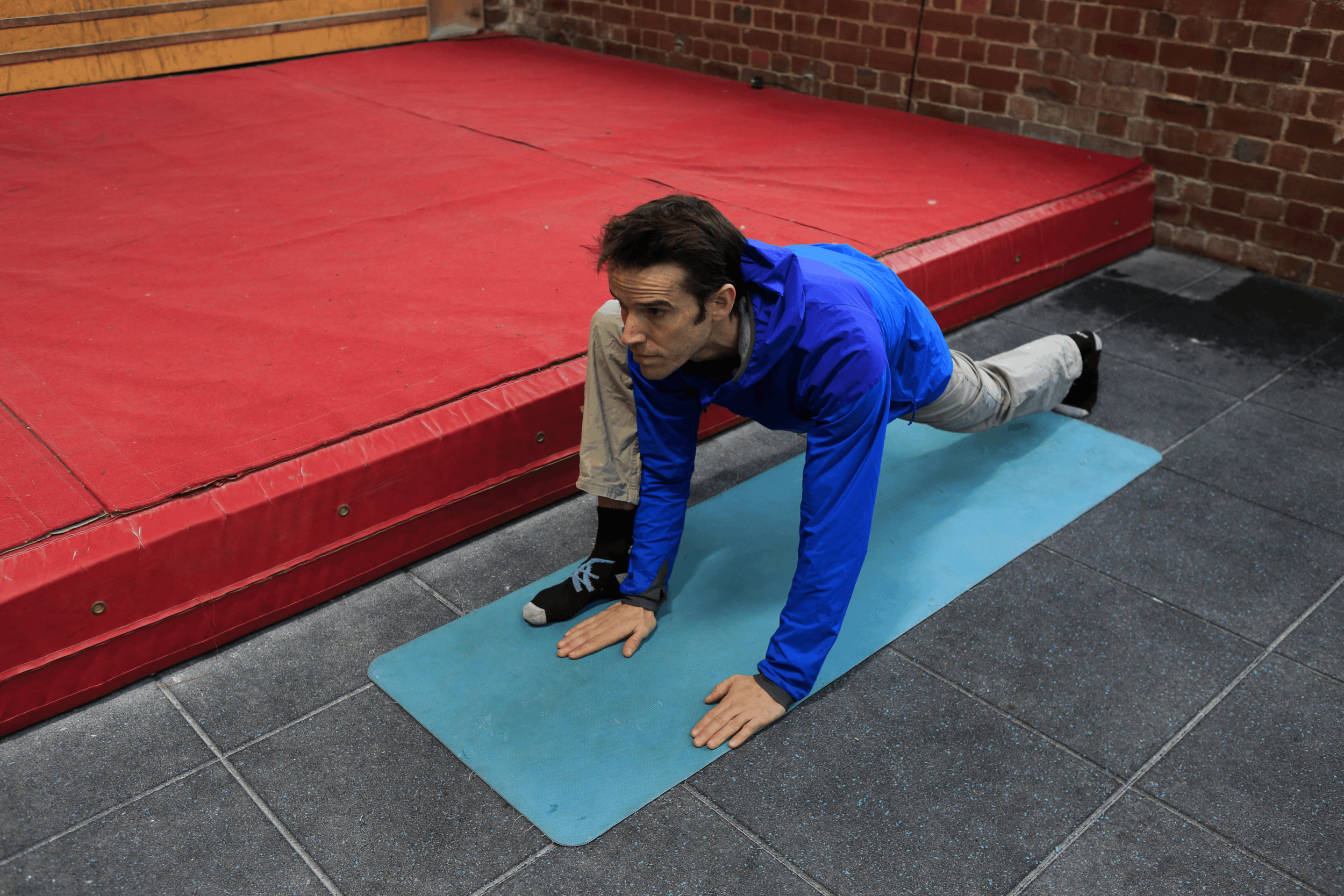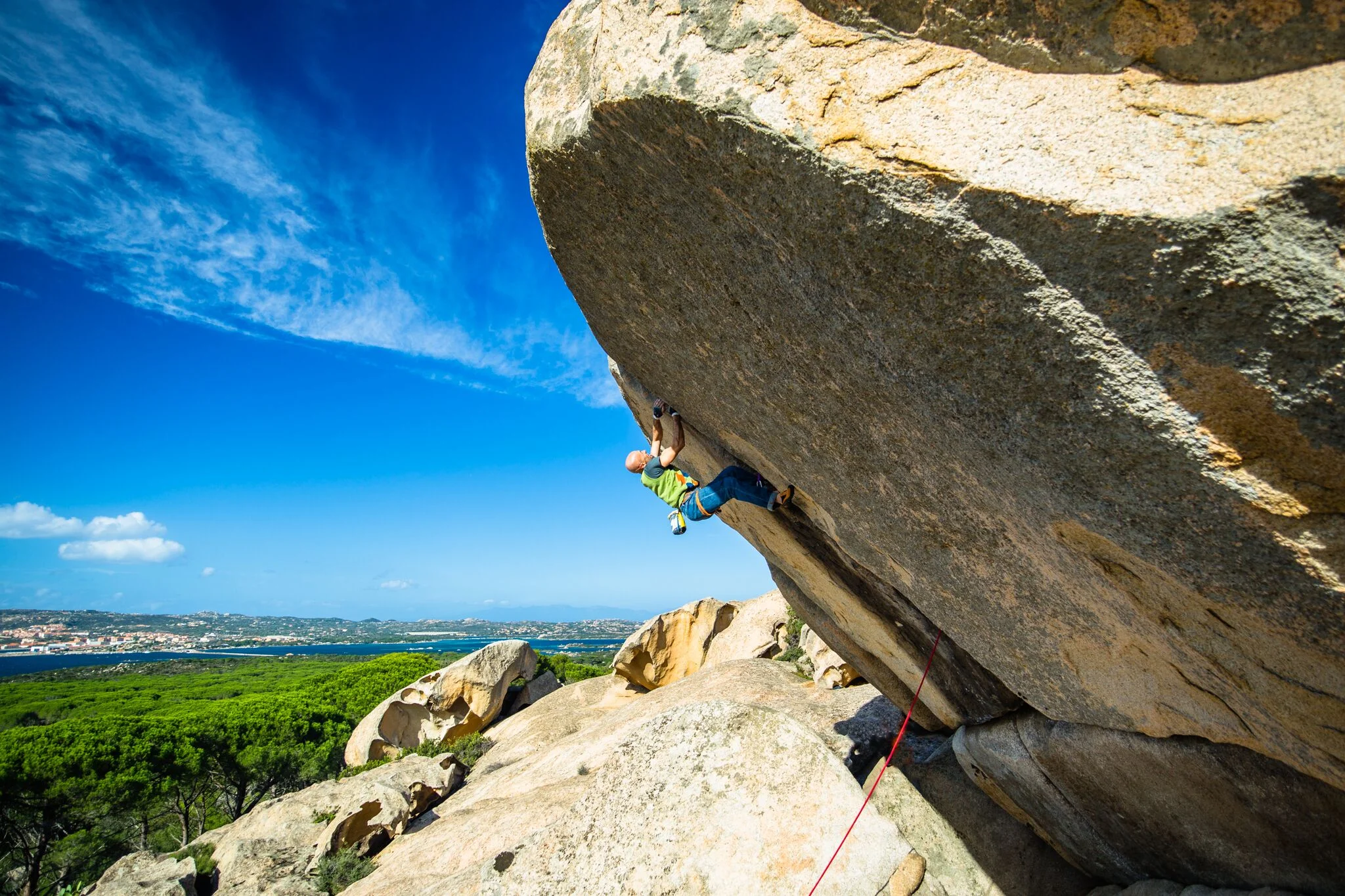3 Key Aspects in Training Climbers Easily Forget
Tom Randall, a climbing coach and the founder of Lattice training, has been testing thousands of climbers around the world. This, combined with his research-based approach, has accumulated him a vast amount of knowledge about climbing and optimal ways to improve it. Here Tom shares 3 common limiting factors for climbers, how to define them and what’s the first step in improving them!
What might come as a surprise when seeing Tom doing some of his hard ascents, is that in the beginning he didn’t consider himself as a natural talent at all. But what he did have, was a huge hunger for training and understanding how it can be optimised.
This led him develop Lattice Training, “world’s first systematic assessment and training tool for climbing” as stated in the website. After testing thousands of climbers, there’s no doubt that Tom wouldn’t have great insights to share.
Tom training on Lattice board.
“When working with climbers in all levels, there’s clear trends to be noticed. One is that professionals score well in most aspects we test them on. They don’t have obvious weak points and rather than them being “superstars” in one particular aspect, they’re in fact solidly above average in most areas.”
“This is something for everyone to keep in mind. It’s easier to define your weak points and improve them, than to get stronger on the things you’re already strong! The limiting things for climbers are broadly similar no matter if you’re 7A or 8A climber.”
So what are the 3 aspects which are easily forgotten by climbers?
1. Finger strength - Basic is effective
It’s obvious but also easy to forget how important fingers are in climbing - just ask anyone who has ever had an injury in them. Tom agrees fully with this and thinks that every climber who wants to progress should pay attention to finger training.
“Best way to understand if you have strong or weak fingers, is to test it on a fingerboard. In order to do it in a correct way, you shouldn’t have any weight on the legs. If you have extremely good foot technique, it might have a big effect on the results if you were to test your fingers whilst also weighting your feet.”
“The best tool for this is a wooden fingerboard with low level of friction. You’re aiming to hang on good, flat holds of 20mm. The goal is to make the hanging very intense by adding weight and aiming to fail in 5 seconds.”
“After you have an understanding of your results (=the amount of added weight), the best way to analyze them is to challenge 5-10 other people climbing similar level as you to do the same and compare the results. This will help you to put the results into perspective. If your score is much lower than your friends, you’ll probably benefit from finger training.”
How to improve your finger strength safely?
As the goal is to improve the maximum finger strength, the training needs to reflect that.
“You want to do two types of training. One close to 100% intensity and the other one 85%. When you’re working on your maximum, the best is to aim to 10 seconds hang with 3 minutes rest in between, and repeat it for 6 times. You should use pretty good holds, easiest is to start with the same holds as in testing, 20mm flat hold.”
“For the interval training of 85% intensity, you’re aiming for 7 seconds hang, 3 seconds rest combination for 1 minute. After that you take 3 minutes rest and repeat this for 4-5 sets. Just this interval training will be a good start for many people with great results.”
When asked about the frequency, Tom suggests that as a rule of thumb beginner should do this once a week, and more advanced for 2-3 times a week.
The training might sound even too simple when there’s all the different finger training options available. But as Tom puts it, “simple is effective”.
To keep in mind: there shouldn’t be any pain involved - don’t train finger strength with injury!
2. Flexibility - get your climbing technique to the next level
You know these climbers who are simply a joy to look at while they’re on the wall? Their movement looks almost like dancing. If you have given more thought to their technique, you might have come to this same conclusion: very likely they have a good level of flexibility.
To address whether flexibility is your weak point, the best way is to find some of these dancers and compare yourself to them.
“Next time you go to the gym ask to do a session with climbers with good technique, but don’t mention about flexibility. Choose 5 different problems on a vertical wall or slab, and video your friends and yourself doing the problems.”
“After going home, play these videos next to each other and compare where your hips, knees and feet go. If you seem to have same or greater range of motion, flexibility is probably not your biggest issue.”
“In case you go like “What am I doing?!” - you’ll probably benefit from stretching.”
How to be one of those graceful climbers?
“Improving flexibility is all about frequency. The absolute minimum is 3 times a week, for 15-30 minutes per session while prioritizing the lower body.”
“The length of a stretch should be minimum of 20 seconds with combination of static and dynamic. Warming up will help you get better results, and yoga and pilates will also do a great job in improving your flexibility.”
What many people have heard and obey, is that one should never stretch before training as it lowers your maximum performance. Tom considers this as an urban legend.
“When you look at the studies, what usually happens is that they make people do very intense stretches and send them right away to a maximal force test. Just think yourself, is this reality in a real training session? Usually there’s easily about 10-20min break after the stretching until you start pushing your limits. This makes a big difference.”
“I know many climbers who stretch before training, and these guys are really good athletes! As stretching is not limited to only after training, it’s easy to do it before, after or even during the training while resting.”
To keep in mind: Stretch to discomfort but not to pain and the older you get, the more important it becomes!
3. Shoulder function - all about healthy form
Shoulder function, meaning the range of motion you have in your shoulders, is vital to climbers in order to avoid injuries and to push for the best results.
“Shoulder function is quite straightforward to test with a scapula shrug-hang. It’s a number one way to identify if there’s good shoulder strength as it includes all stabilizing muscles.
“As a intermediate climber, you should be happy to do this with your own body weight. When looking at elite climbers, 25%+ of their body weight should be perfectly doable. When we are testing people on this, they often say “That was easy.” or “Wow that was hard!”
“When a climber has troubles with the shrug, they usually don’t activate the muscles around the scapula and their anterior (chest and shoulder) muscles get over-activated. When this happens, their chest rolls forward and their shoulders try to come up. Usually this is caused by muscle imbalance, and sometimes due to tight muscles.”
How to get the shoulders back in place?
If you notice a difference on your shrug compared to the video, it’s a good idea to start doing some shoulder training.
There’s multiple moves to get your shoulder muscles more stabilized. What’s often linked with shoulder training is therabands - this is another point Tom takes down.
“Whereas therabands can work for warming up and learning new moves, it’s generally not as good for strength training unless you’re clever about how you do things. The intensity is simply too low for what most people do.”
“Free weights or rings are much better for this, and you should aim for 6-15 repetitions per move. What’s crucial in all the moves, is to get the form right. Otherwise you won’t train the right muscles. The best way to pay attention to this is to compare yourself to some Youtube videos.”
To keep in mind: If you feel any nerve discomfort stop straight away and visit a specialist.
3 Last points
To conclude, Tom shares something that sounds simple but is often forgotten.
“There’s three things that are the key to progression in your climbing training, no matter what your goals are.”
“You need to consistently apply the correct intensity and volume. Too often one is missing, and climber might say for example that “yes I was doing this program accurately for 2 months but then I stopped”, which ends up that the training misses consistency.
Consistent training with right intensity and right volume. With these you have no other options than improve.
Eager to get that strength in use outdoors?
Access hundreds of high quality topos including Fontainebleau, Kalymnos, Rocklands, Siurana, Céüse, Magic Wood and much more with 27 Crags .premium subscription.
If you liked the article, check out our other interview with Dicki Korb, the coach of Alex Megos!
Text by Hanna Vartia, who's working as a marketing manager @27 Crags and prefers her rock 5 meters high.
27 Crags topos are made by local climbing area developers and enthusiasts. From the .premium subscriptions 50% of the income will go straight to the topo authors who are doing extremely important job in developing the climbing areas.
Interested in making topos? Don't hesitate to send us an email: tim(at)27crags(dot)com














